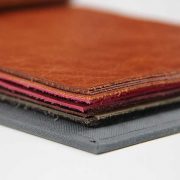- Jun 14, 2020
- 2 min read
Once the dream and preferences of a sofa gain shape in the imagination, it is time to sketch plans and double-check with the customer. In this case, the divan without a backside has to be no higher than 40cm. Legs matching another chair 12cm high. Width 180cm/Depth 90cm even though this can be short for longer people. In the end, it can be used for a longer person, thanks to the shape it.

As an Interior Designer, I use AutoCAD to sketch my plans and make sure the pieces will fit nicely together in the end. Each millimeter counts. When you take furniture apart and reassemble it, you know where the weak points in a piece of furniture are. Drawing and sketching are two different things. Better present both to the client.

It looks like a window above the divan in this sketch, but it actually shows you the divan from above, not including the inner frame. The decorative legs were cut with a band saw. The whole frame was cut on the miter saw and then the work started with the chisel while each wooden plank was clamped on a strong table. The round connection poles were cut in shape with a profile router. When you work with hand tools on the wood you feel the strength and weakness of the wood. In this case, we chose oak wood, to make sure the visible front plank will not bend and hold the persons sitting on it.

Creating something in your own space allows your children to watch and learn too. Luckily they never complain about the mess.

While the neighbors spread scents of barbecue we provide wood dust and color scents. The worst is the bone glue I agree.

After enjoying the sea view for hours comes the part where everything has to be clean. The upholstery process has begun. The mattress for this divan was made out of foams, Acryl, and velvet fabric.

Velvet fabric demands special attention. You need to know in which direction the fibers go and make sure the piping does not cause the fabric to wrinkle.
But in the end, it is a rewarding feeling to see this quite luxurious divan in its full glory in the home of the client and hopes it corresponds to their vision and dream.

Stuck at home? Give it a try and play with your tools and materials!























